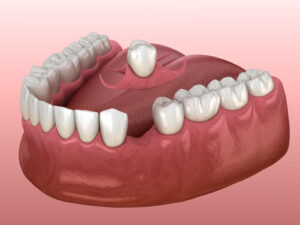Table of Contents
Have you ever experienced the frustrating ordeal of a crown tooth that unexpectedly starts hurting even years after the procedure? The lingering discomfort can be alarming and disruptive, affecting your oral health and overall well-being. In this article, we delve into the potential causes and solutions for the perplexing issue of a crown tooth that hurts years later. Join us as we navigate through this common dental concern, empowering you to find relief from temporary discomfort and regain control over your dental comfort.
Identifying the Causes of Pain Under a Dental Crown
Pain under a dental crown years after installation necessitates a thorough investigation to identify and address the root causes. While dental crowns are effective in restoring damaged teeth, they are not immune to complications that can lead to discomfort or severe pain over time.
- Decay at Crown Margins: Decay can occur at the margins of the crown if bacteria manage to seep through, leading to discomfort and necessitating treatment such as filling replacement or a new crown to halt further decay.
- Tooth Fractures Beneath the Crown: A tooth underneath a crown can suffer fractures due to stress or biting on hard objects. This can result in sharp, localized pain, especially when chewing, and might require crown replacement or additional restorative procedures.
- Root and Nerve Complications: Infections or inflammation in the tooth’s root, often undetectable without a professional diagnosis, can cause intense pain. A root canal may be needed to remove the infected nerve and alleviate the pain.
- Sensitivity from Gum Recession: Gum recession around the dental crown can expose the tooth’s root or the crown’s base, leading to increased sensitivity to temperature changes. Treatments may include gum grafts or desensitizing agents to reduce discomfort.
Diagnostic Approaches for Late-Onset Crown Pain

Diagnosing the cause of late-onset pain under a dental crown involves a series of targeted approaches to identify the underlying issue accurately. Since dental crowns are designed to protect and restore teeth damaged tooth otherwise, pain developing years after placement signals the need for a thorough evaluation. Dental professionals utilize a combination of clinical examination, imaging techniques, and symptom assessment to pinpoint the source of discomfort and formulate an effective treatment strategy.
- Clinical Examination: A comprehensive examination of the affected tooth and surrounding gum tissue helps detect signs of decay, crown damage, or gum disease that could contribute to pain.
- Dental X-rays: Dental X-rays are critical in visualizing the area beneath the crown, revealing any decay, root damage, or bone loss that isn’t apparent during a visual inspection.
- Percussion and Palpation Tests: Percussion testing (tapping on the crown) and palpation (applying pressure to the gum tissue around the crowned tooth) can help identify areas of sensitivity or inflammation indicative of root or periodontal issues.
- Thermal Sensitivity Testing: Applying hot or cold stimuli to the tooth can help assess the health of the tooth’s nerve. Thermal sensitivity testing can indicate whether the nerve is alive, inflamed, or dead, guiding the need for further treatments such as root canal therapy.
- Bite and Occlusion Assessment: Evaluating the patient’s bite and occlusion can reveal if improper crown fit or bite misalignment is causing undue stress on the tooth, leading to pain.
Treatment Options for Resolving Discomfort
Addressing discomfort associated with late-onset crown pain requires a tailored treatment approach based on the underlying cause identified through diagnostic evaluation. Effective management of this pain is crucial to restore oral health and alleviate symptoms, ensuring the dental crown’s longevity and the patient’s well-being. Treatment options vary, ranging from minimally invasive adjustments to more complex dental procedures aimed at pain relief and resolving the specific issue contributing to the discomfort.
- Crown Adjustment or Replacement: If the pain is due to an ill-fitting crown or damage to the crown itself, adjusting the crown’s fit or replacing it entirely can eliminate discomfort and restore function.
- Decay Removal and Crown Re-cementation: Removing and re-cementing the crown or placing a new crown can resolve the pain stemming from decay under the crown.
- Root Canal Therapy: If an infection or inflammation of the tooth’s nerve is causing discomfort, root canal therapy might be required. This treatment entails the extraction of the infected or damaged nerve tissue, which alleviates pain in the teeth and jaw while safeguarding the tooth’s integrity.
- Gum Disease Treatment: If gum disease contributes to the pain, treatments ranging from deep cleaning (scaling and root planing) to more advanced periodontal therapies can help restore gum health and alleviate symptoms.
- Medication for Infection or Inflammation: In cases where infection or inflammation is identified, prescribing antibiotics or anti-inflammatory medications can provide temporary relief and address the underlying cause of discomfort.
Preventive Measures to Avoid Future Crown-Related Pain

Implementing preventive measures is key to avoiding future crown-related pain and ensuring the longevity of dental crowns. Maintaining optimal oral health and taking proactive steps can significantly reduce the risk of issues that lead to discomfort under or around a dental crown. These measures focus on routine care, lifestyle adjustments, and regular dental check-ups, all of which contribute to the overall well-being of crowned teeth and the prevention of common crown problems and complications.
- Regular Dental Check-ups and Cleanings: Regular dental appointments and cleanings facilitate the early identification and management of problems that may affect the integrity of a dental crown, including decay or gum disease.
- Proper Oral Hygiene: Maintaining good oral hygiene practices, including thorough brushing twice a day, flossing daily, and using an antimicrobial mouthwash, helps prevent plaque buildup and decay under and around the crown.
- Avoiding Hard and Sticky Foods: To prevent damage to the crown and underlying tooth, it’s advisable to avoid hard and sticky foods that can cause cracks or dislodge the crown.
- Using a Night Guard: For individuals who grind their teeth at night, it can protect crowns from excessive wear and potential damage.
- Immediate Addressal of Dental Issues: Promptly addressing dental issues, such as sensitivity or discomfort around the crown, can prevent minor problems from developing into major concerns that cause pain.
In conclusion, experiencing tooth pain years after receiving a crown can be concerning. While various factors can contribute to the discomfort, it is essential to consult a dental professional at ADC Campbelltown Dental Care clinic for an accurate diagnosis and appropriate treatment. This approach ensures that any underlying issues, such as tooth decay, infection, or a flawed crown, can be addressed effectively. Prompt dental care is crucial to alleviate pain and prevent complications.
References
Dental Crown Tooth Pain: Causes and Treatment
https://www.healthline.com/health/what-causes-dental-crown-tooth-pain-and-how-to-relieve-it
Endodontic Retreatment Explained
https://www.aae.org/patients/root-canal-treatment/endodontic-treatment-options/endodontic-retreatment/endodontic-retreatment-explained/
Pressure-causing pain on a tooth that had a root canal and crown put on five years ago; what could be the cause of the pain?
https://www.realself.com/question/burleson-tx-pressure-pain-root-canaled-tooth-crown-years-after-initial
Tooth Crown Pain: Causes And Treatment
https://www.colgate.com/en-us/oral-health/bridges-and-crowns/tooth-crown-pain-causes-treatment
Tooth Sensitivity After Crowns: What You Need to Know
https://www.verywellhealth.com/tooth-sensitivity-after-crown-5210263
